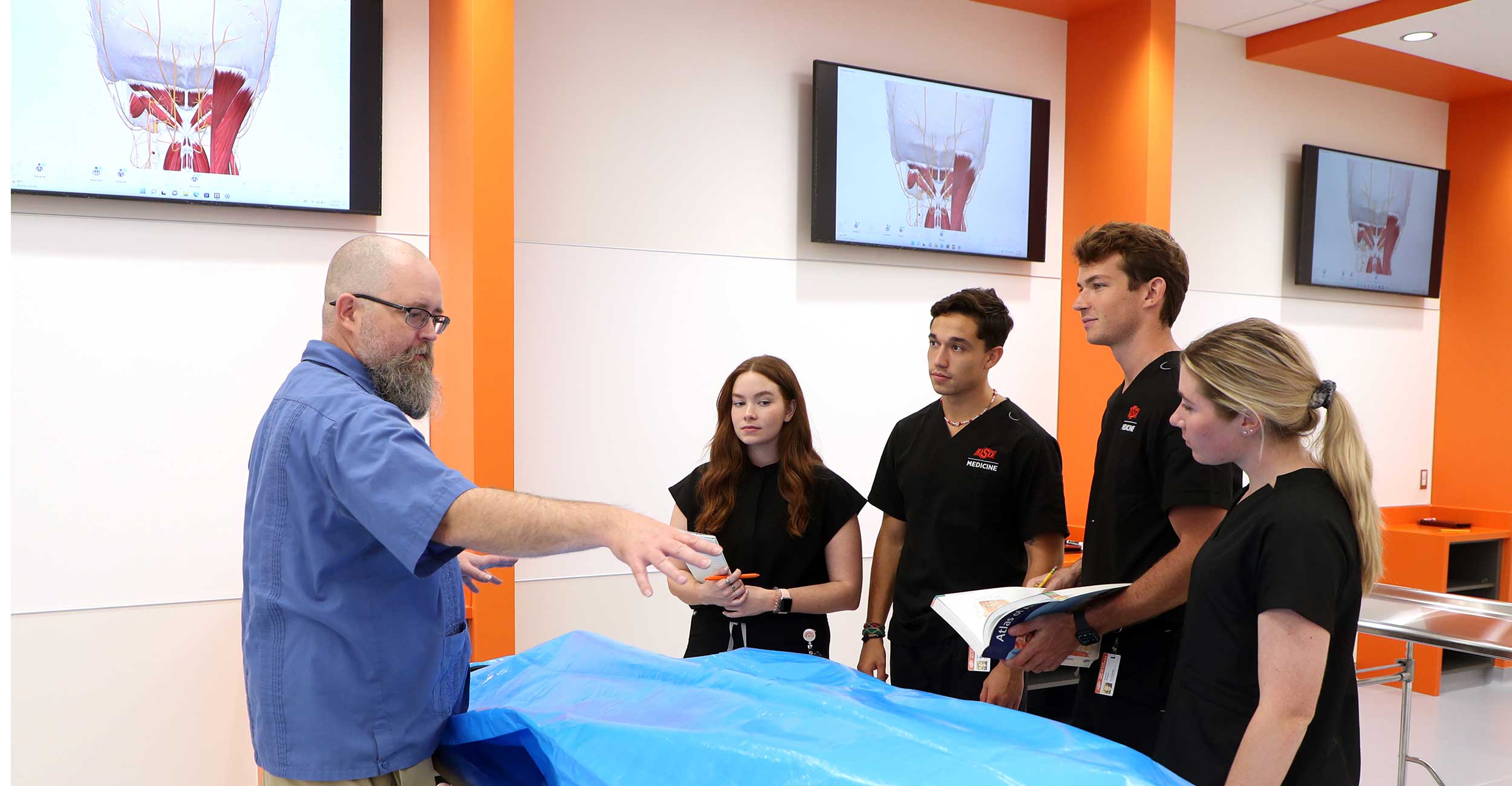
New anatomy, neuroanatomy labs major upgrade for students and faculty
Friday, August 19, 2022
Media Contact: Sara Plummer | Communications Coordinator | 918-561-1282 | sara.plummer@okstate.edu
As part of the new North Hall building on the OSU Center for Health Sciences campus, medical and graduate students now have access to new, modern anatomy and neuroanatomy labs that greatly expand the available space of the former lab.
“It’s at least three times as big,” said Thom Garrison, lab coordinator and director of the OSU Body Donor Program. “Everything was in the same space. Now we have an entryway with storage spaces for student belongings, dedicated wash stations, tables and chairs for study.”
And there is just more square footage in the lab itself.
“Students bumping elbows with students at the next table was fairly common in the old lab. Students have more space to move around and work on their assigned cadavers. We also have more storage space for equipment, skeletal and anatomical models,” Garrison said. “The cadaver storage unit is twice the capacity and is located in its own secured area of the lab.”
The neuroanatomy lab is also a major upgrade from the previous lab space, said Professor of Anatomy Kent Smith, Ph.D.
“In the past, all neuroanatomy courses were taught in the gross anatomy lab meaning multiple medical and graduate student courses all shared space, which was very challenging for students and faculty,” Smith said. “Now, like at our OSU College of Osteopathic Medicine at the Cherokee Nation campus in Tahlequah, there are two separate labs: one for gross anatomy where whole bodies will be studied and one for neuroanatomy where only brains will be studied.”
Smith said the neuroanatomy lab will accommodate new graduate courses in addition to the regular neuroanatomy courses that were offered in the past.
“They are our honored guests and we’re privileged to have them here."
The additional lab space also allows room to grow with 16 stations now available in the gross anatomy lab, each with its own area for daily supply storage, dry erase board and countertop space for laptops or books.
This semester there are 13 stations being used in each of the three anatomy classes with students divided into groups of four at each station.
“The AV system is a welcomed upgrade— a two-camera system, bigger and better monitors and audio throughout the lab,” he said. “The new lighting is also a vast improvement. No more shadows over the cadaver, which makes for a much better dissection environment.”
There is also a dedicated temporal bone lab so students can study the area of the head where the ear is located using real bone and tissue, and not just rely on models, Garrison said.
The new lab spaces also honor those who made the decision to donate their or their family member’s body to the Body Donor Program.
“They are our honored guests and we’re privileged to have them here,” Garrison said.
Each group of students is assigned a donated body at the beginning of the semester, and they will dissect and learn from their cadaver during their time in the lab.
Clinical Assistant Professor of Anatomy Ian Browne, Ph.D., said that the assigned body is the students’ first patient.
“They’re probably the best anatomy professor they’ll ever have,” Browne said. “They were members of the community and they cared about the community. They gave this gift so our students could go out and care for the community.”
